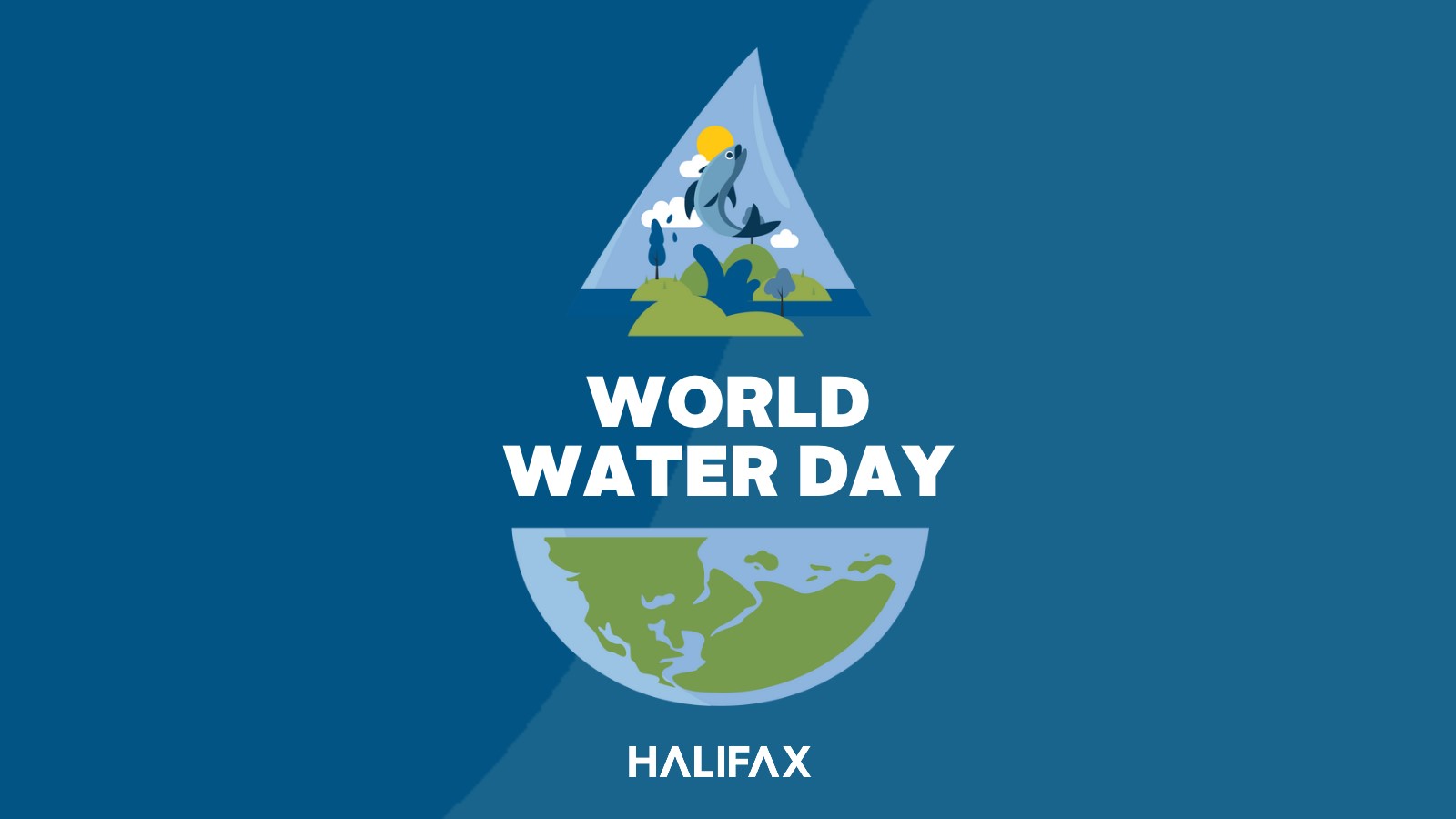**** HRM Media Release
World Water Day
March 22 is World Water Day. To celebrate, we’re sharing tips to help you preserve the health of lakes and rivers in your community. Simple individual actions can have a big impact when it comes to taking action on climate change. Here are some ways we can all contribute:
- Reduce lawn coverage on your property by replacing grass with deep-rooted, thirsty plants native to your area. This can help reduce water pollution, prevent flooding and provide productive habitats for pollinators.
- Consider planting a rain garden to capture standing water on your property. Not only does this prevent flooding, but it keeps stormwater runoff from leaving your property and entering local waterways.
- Clean up after your dogs and throw it in the garbage, even if it’s in a wooded area. Animal waste contains bacteria and parasites, such as E. coli, giardia and salmonella. Waste washes from streets, parks and private property into our waterways, which pollutes our watershed. This poses a health risk to both humans and other animals. High bacteria levels in the water not only pollute our watersheds but can lead to beach closures throughout the summer. Learn more about our Canines for Clean Water initiative.
- Avoid using chemical fertilizers on your lawn and gardens wherever possible. Pollution from fertilizers ends up in our waterways and increases the likelihood of nuisance aquatic weeds, blue-green algae and E. coli.
- Avoid using herbicides and pesticides on your property wherever possible to avoid toxic pollutants entering our waterways. Try researching organic gardening practices such as companion planting and non-toxic alternatives.
- Regularly service your septic system. Septic systems that aren’t properly maintained can allow pollutants to seep into groundwater, surface water and soil.
- Install a rain barrel. This simple action can prevent flooding on your property and allows you to reuse the water for your garden.
- Participate in our LakeWatchers program. Our community-based lake monitoring program, LakeWatchers, gathers water quality data that will help us understand the health of our lakes and how they are changing. Data collected will inform planning policies for future growth and development.
- If you have property on water, consider naturalizing your shoreline. This can reduce water run-off that causes harmful algae blooms and excessive weed growth as well as reducing shoreline erosion.
To learn more about taking climate action in the municipality, visit halifax.ca/climate.
How can I improve the health of lakes, rivers and watersheds?
Watersheds are interconnected. Every action that effects the land also has indirect effects on lakes, rivers, and the ocean waters they drain into.
Simple individual actions can help preserve and improve the quality and health of these waters:
- reduce and/or eliminate the use of household and commercial hazardous products
- make use of Household Hazardous Waste Depots and avoid pouring used cleaners, paints, chemicals or other materials down your drains or into storm water systems such as gutters, ditches, storm sewers, or streams
- pick up after your pet, and dispose of the waste in the garbage
- limit your use of lawn fertilizers, or try alternatives such as compost
Invasive aquatic species
Local waterways are home to both native and non-native plants and animals. Non-native species whose introduction causes—or is likely to cause—harm to people, the environment, or the economy, are called invasive species. The Municipality has a fewinvasive species on its radar.
The Regional Watersheds Advisory Board
Halifax Regional Council appointed the Regional Watersheds Advisory Board in 2013. The board advises the Environment and Sustainability Standing Committee of Regional Council and conducts duties as may be assigned by Regional Council or the Environment and Sustainability Standing Committee.
The Halifax Regional Municipality is home to over 1,000 lakes, more than 20 rivers, innumerable streams, and 23 major coastal shorelines places for recreation, and fish and wildlife habitats. Through our Regional Plan, we’ve committed to study watersheds and natural watercourses before secondary planning takes place in an effort to maintain the health of water and meet body contact recreation standards in its lakes, waterways and coastal waters.




